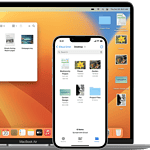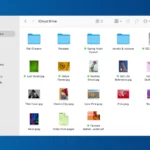Apple’s plans for the M4 Mac Studio have shifted, and now the company will delay the release of the new and more powerful desktop system until the second quarter of 2025. This delay pushes back the launch of the M4-equipped Mac Studio by a few months from its originally anticipated timeline.
The M4 chip represents Apple’s next generation of custom silicon, promising enhanced performance and efficiency. While the Mac Studio faces a delay, other M4-powered devices are still on track. The MacBook Air with M4 chip is expected to debut in early 2025, maintaining its original schedule.
Apple’s decision to postpone the Mac Studio launch may disappoint some professionals eagerly awaiting the upgraded model. However, this delay could allow Apple to refine the product further and ensure it meets the high standards expected by its target audience of creative professionals and power users.
M4 Mac Studio Release: What We Know
Delayed Launch
Apple has reportedly pushed back the release of the new M4 Mac Studio. It was initially expected in early 2025, alongside the M4 MacBook Air. However, it’s now likely to arrive in the second quarter of 2025, between April and June.
Reasons for the Delay
While Apple hasn’t given an official reason, there are a few possible explanations for the delay:
- Prioritizing other products: Apple may be focusing on the release of the M4 MacBook Air and other upcoming products, like new iPads and a revamped iPhone SE.
- Production challenges: There could be production challenges related to the M4 chips or other components of the Mac Studio.
- Software development: Apple might need more time to optimize macOS for the new Mac Studio and its powerful M4 chips.
Expected Features
Despite the delay, anticipation is high for the M4 Mac Studio. Here’s what we expect to see:
- M4 Max and M4 Ultra chips: The new Mac Studio will likely feature the M4 Max and M4 Ultra chips, offering a significant performance boost over the current M2 models.
- Improved thermal design: Apple may improve the thermal design to handle the increased power of the M4 chips.
- Updated connectivity: We could see upgrades to connectivity, such as Thunderbolt 5 or Wi-Fi 7.
- Similar design: The overall design is likely to remain similar to the current Mac Studio.
Should You Wait?
If you need a powerful desktop Mac right now, the current M2 Mac Studio is still a great option. However, if you can wait a few months, the M4 Mac Studio will likely be a worthwhile upgrade.
Mac Studio: M2 vs. M4 (Expected)
| Feature | M2 Mac Studio | M4 Mac Studio (Expected) |
|---|---|---|
| Release Date | March 2022 | Q2 2025 |
| Starting Price | $1999 (M2 Max) / $3999 (M2 Ultra) | Likely similar or slightly higher |
| Chip Options | M2 Max, M2 Ultra | M4 Max, M4 Ultra |
| Memory | Up to 128GB unified memory | Possibly up to 192GB unified memory |
| Connectivity | Thunderbolt 4, 10Gb Ethernet | Possibly Thunderbolt 5, Wi-Fi 7 |
The Mac Pro: Apple’s Most Powerful Option
For users who need even more power than the Mac Studio, there’s the Mac Pro. This high-end desktop workstation is designed for professionals with demanding workflows. It features Intel Xeon processors, up to 1.5TB of memory, and multiple expansion slots. While the Mac Pro hasn’t been updated with Apple silicon yet, rumors suggest an M4-powered version is in the works.
Introduction:
Key Takeaways
- Apple has delayed the M4 Mac Studio release to Q2 2025
- The M4 MacBook Air remains on schedule for early 2025
- The delay may allow Apple to further refine the Mac Studio
Impact of the M4 Mac Studio Delay
Apple has delayed the launch of its highly anticipated M4 Mac Studio to the second quarter of 2025. This delay, likely due to a combination of factors like prioritizing other product releases and potential production challenges, has pushed the release back from its initial early 2025 projection.
Despite the setback, expectations remain high for the M4 Mac Studio, with anticipated features including powerful M4 Max and M4 Ultra chips, improved thermal design, and updated connectivity. While the current M2 Mac Studio remains a strong contender for those needing a powerful desktop Mac now, the M4 version promises a significant upgrade for those who can wait.
The postponement of the M4 Mac Studio to the second quarter of 2025 brings significant changes to Apple’s product lineup and market expectations. This delay affects professional users, Apple’s release strategy, and the broader tech industry.
Anticipated Features of the M4 Mac Studio
The M4 Mac Studio is expected to showcase Apple’s latest advancements in chip technology. The M4 chip, likely available in M4 Max and M4 Ultra variants, promises substantial performance improvements. These may include:
- Faster processing speeds
- Enhanced graphics capabilities
- More efficient power consumption
- Improved machine learning with an upgraded Neural Engine
The delay could allow Apple to refine these features further. Professional users anticipate better support for resource-intensive tasks like 3D rendering, video editing, and scientific computations.
Apple’s Product Roadmap Updates
Apple’s decision to push back the M4 Mac Studio release affects its entire Mac lineup strategy. Key points include:
- The MacBook Air with M4 chip is still on track for early 2025
- Mac Pro updates may be impacted, potentially creating a gap in pro-level offerings
- iMac and Mac mini refresh cycles could be adjusted to maintain a balanced product range
This shift may lead to a more concentrated release schedule in mid-2025, potentially overwhelming consumers with choices. It also gives Apple more time to differentiate the Mac Studio from other high-performance Macs.
Industry and Market Implications
The delay of the M4 Mac Studio has ripple effects across the tech industry:
- Competitors may seize the opportunity to release rival products earlier
- Professional users might delay upgrades, impacting software developers and accessory makers
- The high-end desktop market could see slower growth in the first half of 2025
The postponement also raises questions about Apple Silicon production capabilities and supply chain management. It may indicate challenges in scaling up advanced chip manufacturing processes or a strategic decision to fine-tune performance for demanding professional applications.
Frequently Asked Questions
The upcoming M4 Mac Studio release has generated significant interest and speculation. Users are curious about its release date, potential features, and reasons for the delay.
What is the expected release date for the new Mac Studio model?
The new Mac Studio model with the M4 chip is expected to launch in the second quarter of 2025. This timeframe aligns with Apple’s typical release schedule for professional-grade Macs.
Are there any announced delays for the upcoming Mac Studio with the M4 chip?
Yes, Apple has reportedly pushed back the release of the M4 Mac Studio. The device was initially expected to launch alongside other M4 Macs in early 2025, but it has been delayed to the second quarter of 2025.
What are the anticipated features of the M4 Ultra chip in the next Mac Studio?
The M4 Ultra chip is likely to offer improved performance and energy efficiency compared to its predecessor. It may feature more CPU and GPU cores, enhanced machine learning capabilities, and increased memory bandwidth.
How long does Apple typically provide updates for its Mac Studio line?
Apple generally supports its Mac products with software updates for about 7 years. The Mac Studio line, being relatively new, is expected to follow a similar pattern of long-term software support.
Will there be any significant design changes in the next generation Mac Studio?
Apple often maintains consistent designs across generations for its professional products. The next Mac Studio is likely to retain its compact form factor, with potential minor refinements to cooling or port selection.
What are the reasons behind the delay of the M4 Mac Studio release?
The specific reasons for the delay have not been officially disclosed. Possible factors could include chip production challenges, software optimization needs, or strategic decisions to align with other product launches in Apple’s lineup.







